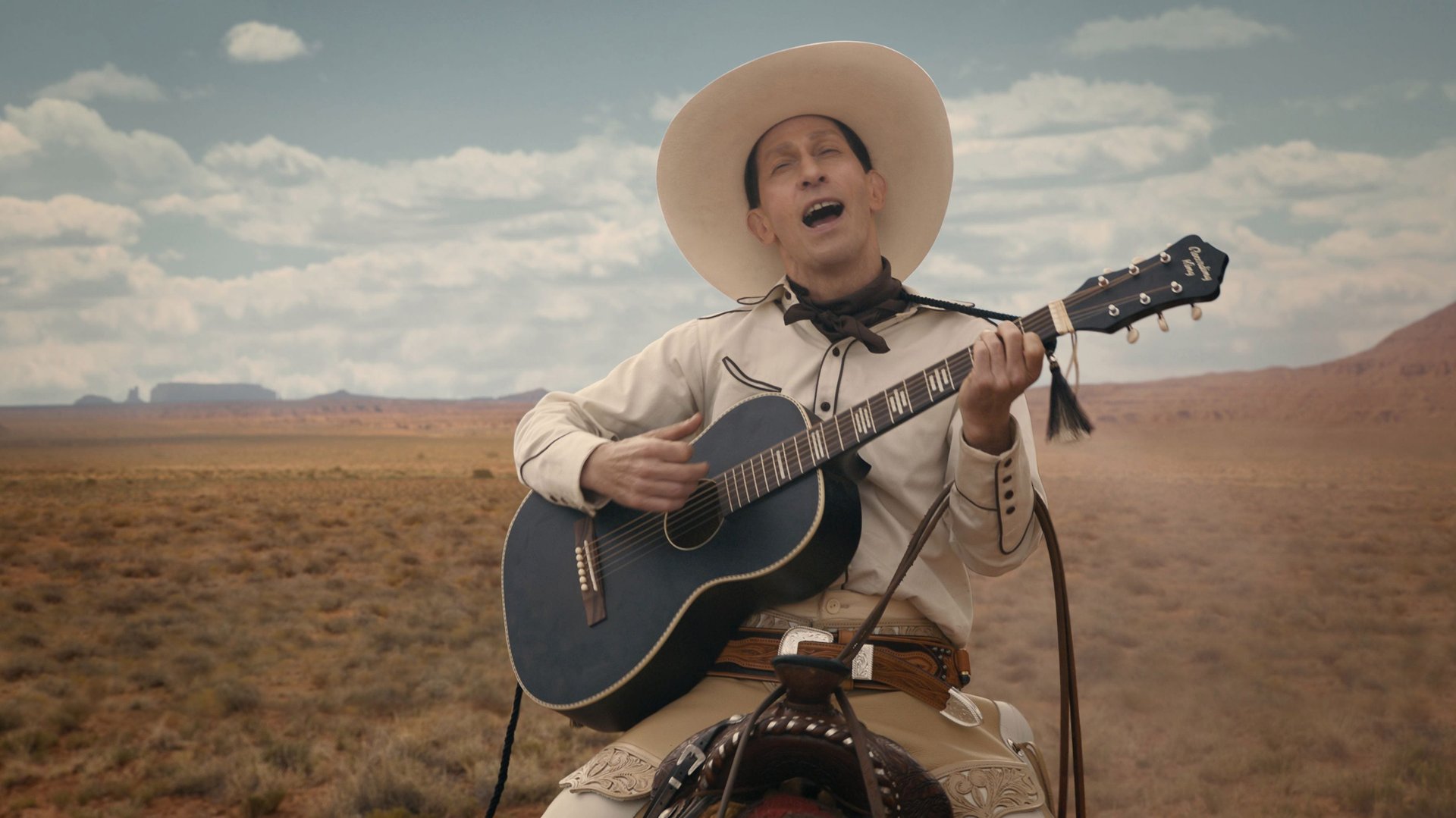The Coen brothers’ new film is a concept album about our tenuous existence
The Ballad of Buster Scruggs, the new six-part Western anthology film by the Coen brothers released on Netflix yesterday, is essentially the film equivalent of a music album. And that album is about death.


The Ballad of Buster Scruggs, the new six-part Western anthology film by the Coen brothers released on Netflix yesterday, is essentially the film equivalent of a music album. And that album is about death.
“It really could be seen as tracks on a record album,” Joel Coen told press last month at a New York Film Festival panel, which also included the film’s stars Tim Blake Nelson, Zoe Kazan, and Bill Heck. “[The six installments] were always intended to be seen together as a group.”
Written by the Coens over a period of 25 years, each roughly 20-minute short film deals in some way with the cruel—or is it merciful?—inevitability of mortality. And what better setting to put these stories in than the American Old West, a time and place often governed by nihilism.
The short films are bound together by a single framing device: They’re chapters in a book of Western folk tales being read by an unidentified person, whose hand we see turning the page between stories. Other than that, though, the six parts share no characters or plot lines. They’re wholly distinct stories that can be watched in any order, but the progression that the Coens presented is probably the most fulfilling experience. Watched together, the experience is similar to listening to Pink Floyd’s The Wall from start to finish. Or maybe it’s more like Bruce Springsteen’s Nebraska, the Boss’s soundtrack for death—everything dies, baby, that’s a fact.
“There’s a tremendous internal dream logic between the chapters” said Kazan, who stars with Heck in the film’s fifth (and arguably best) chapter, “The Gal Who Got Rattled,” about a wagon train on the Oregon Trail that runs into a heap of trouble. Heck agreed: “Each piece gives permission for the next one to occur,” he said.
Indeed, despite having only the Western genre and a vague thematic through-line of “death” in common, the stories build on one another, subtly cohering into something greater than the sum of its parts. By the time the final installment, “The Mortal Remains,” hits, you’ll realize that, actually, this is all one story about our fragile existence, and it simply had to be told this way.
“What’s astonishing about this is that it’s six different movies in the Western genre, but then each one is in the vernacular of a subgenre in and of itself,” added Nelson, who plays Buster Scruggs—a whimsical caricature of the singing, gunslingin’ cowboy—in the film’s first chapter.
You can almost imagine each part as a track on Spotify—Nelson’s “The Ballad of Buster Scruggs” as the warm, accessible opener; “The Gal Who Got Rattled” as the album’s meatiest, most profound effort; and “The Mortal Remains” as the haunting closer.
In between those staples are the still-solid but more forgettable “Near Algodones” (starring James Franco as a bank robber who gets his comeuppance); “Meal Ticket” (starring Liam Neeson as a downtrodden impresario for a traveling performer with no limbs); and “All Gold Canyon” (starring Tom Waits as a prospector mining for gold in a pristine valley, as yet uncorrupted by man). They’re perfectly good songs on the album, but they won’t bring the house down. As a whole, however, The Ballad of Buster Scruggs totally does.